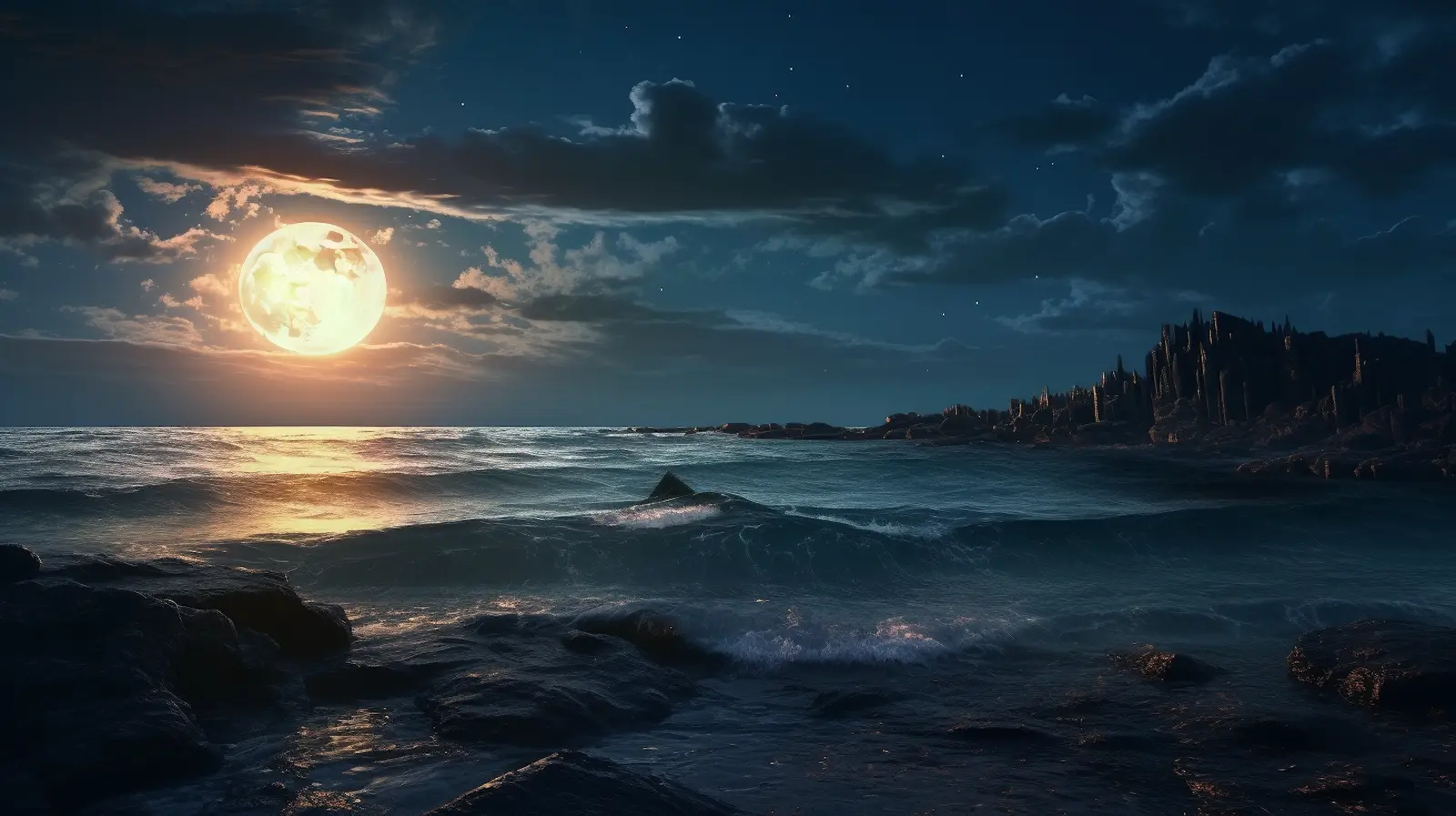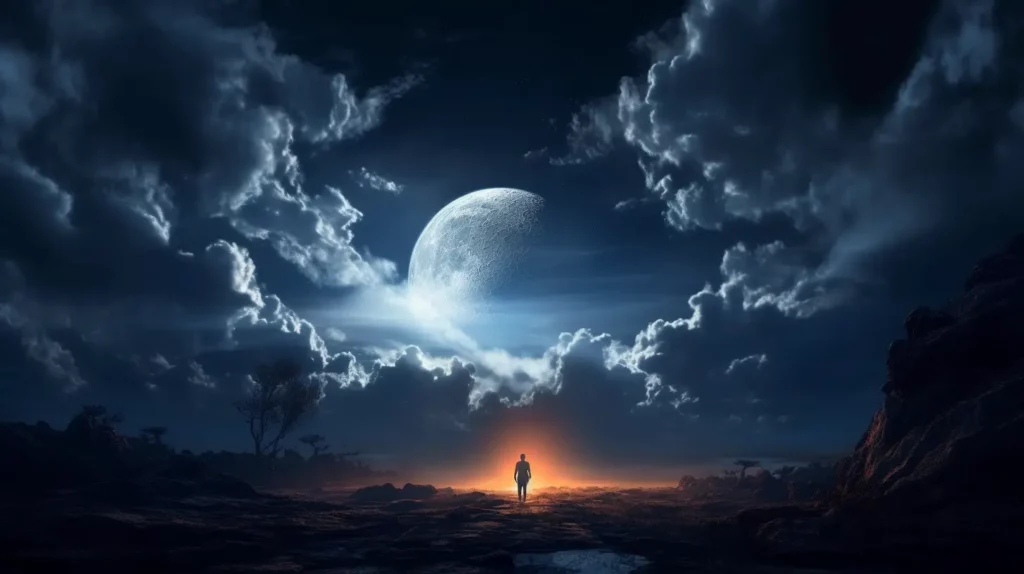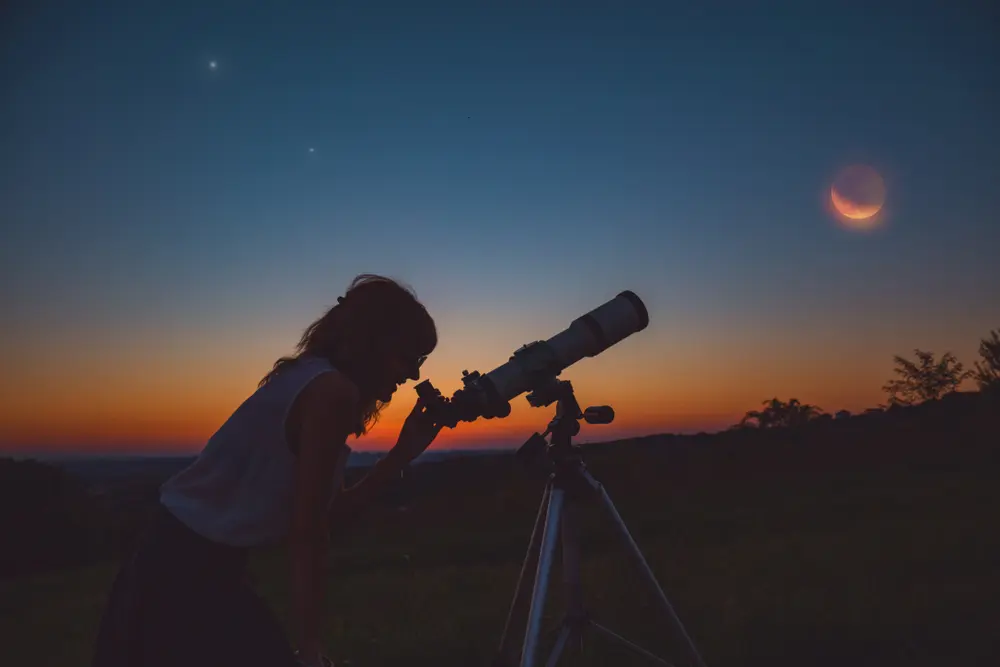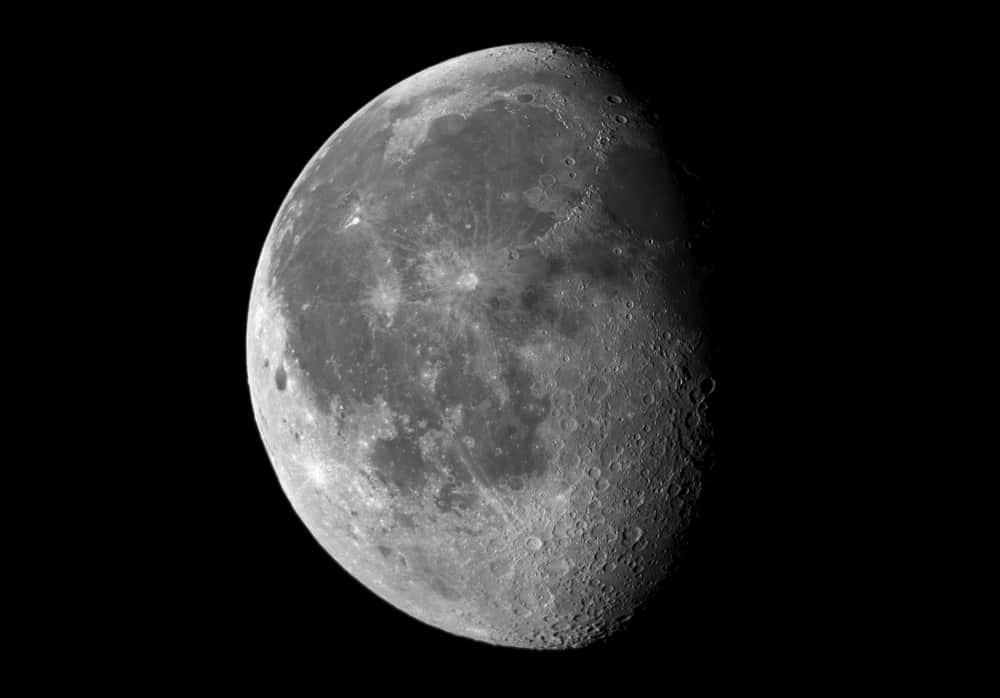
When is the full moon in June? Strawberry Moon 2023 Time & Date
Last Updated: November 9, 2023
The upcoming full moon in June will grace our night sky on Saturday June 3, 11:43 P.M. EDT / Sunday June 4, 4:43 A.M. GMT. During this particular phase of its lunar cycle, the moon will have aged 15.33 days, offering an almost perfect illumination of 99.98%.
With a tilt angle of 124.334°, our natural satellite will be located approximately 370,495.01 km away from Earth. This equates to about 230,256 miles, or roughly 0.00247 Astronomical Units (AU). Interestingly, the Moon will only be about 1.96% away from its average perigee distance (closest distance from Earth), so we only just missed out on a supermoon by 7,148 km!
In terms of light travel time, this distance corresponds to approximately 1.23 light minutes. In the realm of astrology, the moon will align with the sign of Sagittarius on this day. This full moon is the last one of the spring season which ends on June 21st, the day of the summer solstice! This 2-day celestial event is a timely reminder of the seasonal transition ahead!
Countdown to the Full Moon June 2023
Moon gazing information for the June Full Moon 2023
The moon’s magnitude, a measure of its brightness, will be -12.72. In astronomical terms, a lower value signifies a brighter object, which means the moon will be exceptionally bright during this event.
The terms Ra/Dec refer to the moon’s position in the sky, known as Right Ascension (Ra) and Declination (Dec). These coordinates will be 16h 44m 12.9s and -26°15’15.1″, respectively, corresponding to the celestial longitude and latitude.
Similarly, the terms Az/Alt denote the moon’s azimuth and altitude, which represent the moon’s direction and height from the horizon, respectively. These will be 132°02’24.3″ for the azimuth and +04°51’31.3″ for the altitude.
The June full moon will have an apparent diameter of 32 arcminutes, so even tho it will be quite enjoyable to the naked eye, observing it with a basic set of binoculars or a small telescope, will allow for a detailed exploration of its surface features.
Additional information:
- Moonlight intensity: High
- Moonlight shadows: Strong
- Culmination time: location dependent
- Moonrise and moonset times: location dependant, use this website to find those times.
- Supermoon? No
- Micromoon? No
- Blue moon? No
- Lunar Eclipse: No
- Conjunctions? None
Nearby night sky objects
The moon will be located between the Scorpius and the Ophucius constellation. On the northeast of the full moon, you’ll find Antares, the 16th brightest star of the night sky. In terms of deep sky objects, globular clusters M4 and M19 will be located in the vicinity of this full strawberry moon.
Why is the June full Moon called the Strawberry Moon?
The sixth full moon of the year is the Strawberry Moon as it marks the month in which strawberry picking season peaks in North America. Other Native American names include the Berries Ripen Moon, the Green Corn Moon, and Hot Moon to designate the beginning of summer heat.
The Celtic names included the Rose Moon (often used by Europeans in general), the Mead Moon, the Horse Moon, and the Dyan Moon. Other English names for this full moon are Flower Moon and Planting Moon. In China, it is known as the Lotus Moon.
Related reading: Lunar Legends: The Meaning Behind Full Moon Names + Dates
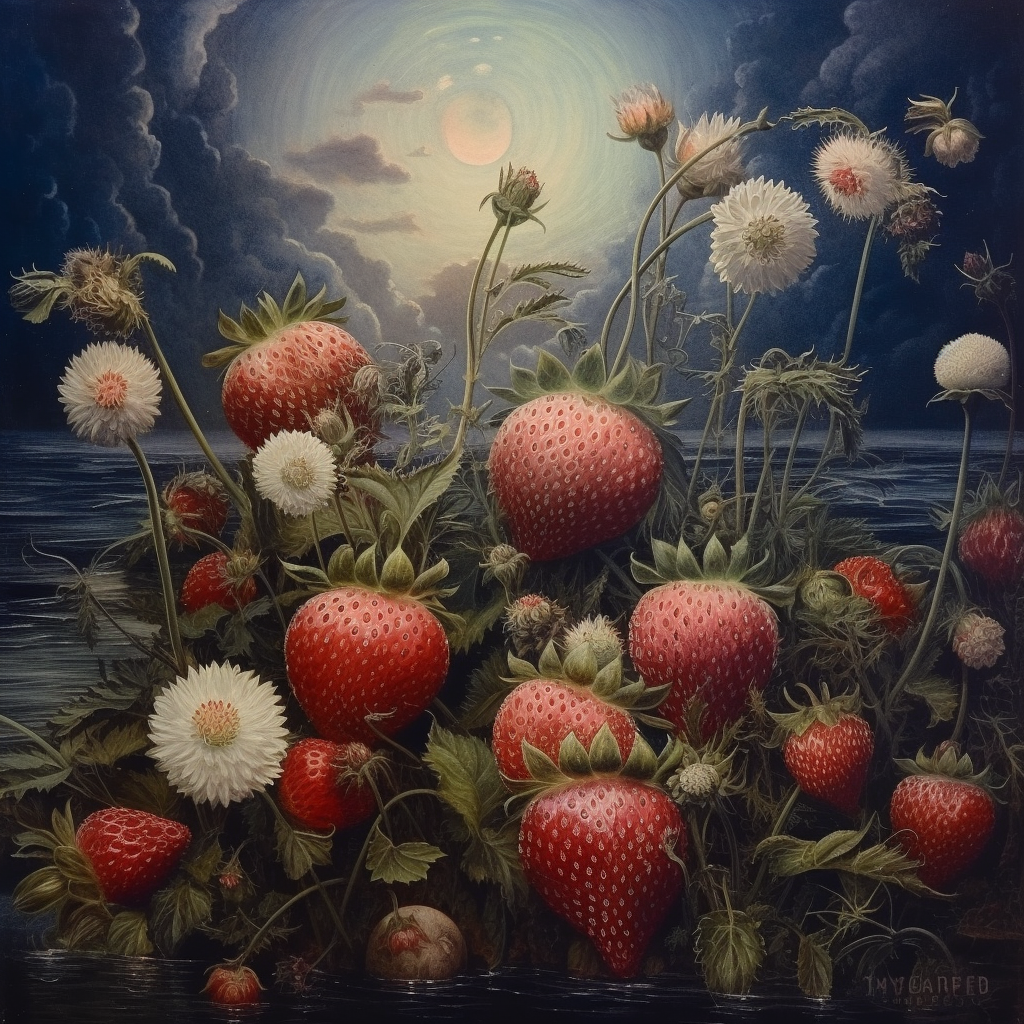
Observing this strawberry full moon with astronomical equipment
The Moon offers a variety of interesting features that you can observe, even with modest equipment. The moon is without a doubt the easiest celestial object to observe with a backyard telescope or a pair of astronomical binoculars.
The Moon can shine a rather bright light when it is full so the use of a special lunar filter can help improve your view of the Moon. This is an additional component that reduces the amount of light coming into the telescope, making it easier to see the details without being blinded.
It essentially works much like ‘sunglasses’ for your telescope. It reduces glare and improves contrast, allowing you to see more detail. The filter threads into the bottom of an eyepiece, so it’s easy to add or remove as needed.
- A smaller aperture telescope (60mm to 80mm) can provide good views of the moon. You’ll be able to see a decent amount of detail, including larger craters and lunar maria.
- Medium aperture telescopes (around 100mm to 150mm) will give you a much better view, revealing many more features and allowing you to see smaller craters and other details.
- With large aperture telescopes (200mm and above), that’s where the magic happens! You’ll see more detailed views of the edges of lunar maria, where they meet the highlands. You’ll be able to discern more subtle color differences in the lunar surface as well as mountain ranges casting subtle shadows on the lunar surface. You might be able to see hints of the lunar domes, which are gentle, rounded mounds thought to be the remnants of ancient lunar volcanoes.
Be sure to choose the correct eyepiece for an appropriate magnification power as it will greatly influence your field of view at the eyepiece. Try my field-of-view calculator to determine the best eyepiece for your lunar observations.
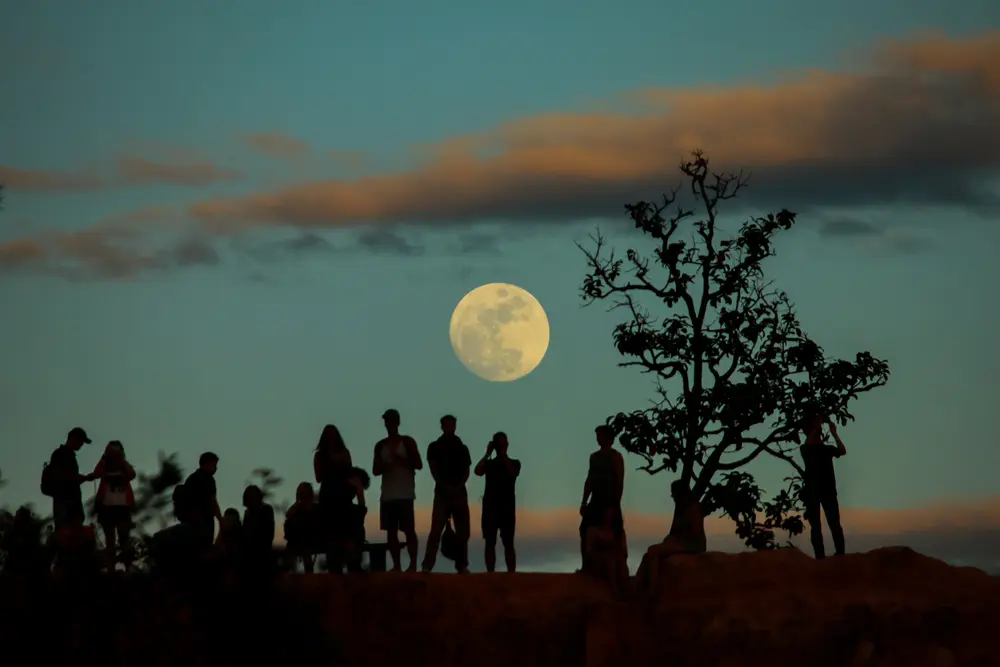
Planning your lunar observation with Stellarium
Stellarium is a free open-source planetarium for your computer that shows a realistic sky in 3D, just like what you see with the naked eye, binoculars, or a telescope. It’s one of my favourite stargazing applications, I use it on a weekly basis and it’s super easy to use.
Here is a step-by-step guide to using it for timing your observation of the upcoming strawberry full moon:
- Set Your Location: Open https://stellarium-web.org/ into your internet browser. In order to find the accurate rise and set times for the moon, you need to set your geographic location. Click on the “Location Window” button on the left toolbar. In the window that pops up, search for your city in the “Search” field, then click on your city’s name in the list. This sets your location.
- Set the right time: Stellarium can show you the sky at any time, past, present, or future. To get the full moon time, which in June will be the 4th, you need to click on the “Date/time window” button on the bottom right of the screen. You can also manually adjust the time by hours and minutes and see the sky moves before your eyes.
- Locate the Moon: Now, you need to find the moon in the sky. You can do this by using the search function. Click on the “Search Window” button on the centre top of the screen. Type “Moon” into the search field and press enter. The view should now center on the moon.
- Check Moonrise and Moonset Times: Once the moon is centered, an information box should pop up on the upper left corner of the screen. This box will provide various details, including the moonrise and moonset times for the chosen day.
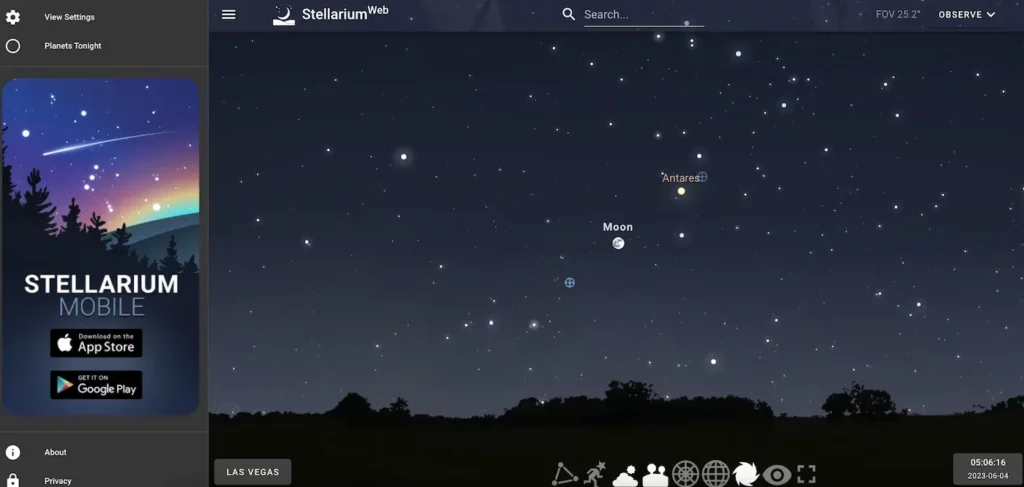
Dates & Times for the other moon phases in June
Besides the full moon, there are seven other major phases in the lunar cycle: the new moon, waxing crescent, first quarter, waxing gibbous, waning gibbous, last quarter, and waning crescent. Each of these phases presents a unique view of the moon and contributes to the lunar cycle that we observe from Earth.
- Last Quarter: June 10, 3:32 P.M. EDT / June 10, 7:32 P.M. GMT
- New Moon: June 18, 12:39 A.M. EDT / June 18, 4:39 A.M. GMT
- First Quarter: June 26, 3:51 A.M. EDT / June 26, 7:51 A.M. GMT
The next strawberry will take place on Friday, June 21, 2024, 9:08 PM EDT / Saturday, June 22, 2024, 1:08 AM GMT
Lunar Luminosity: the full Moon's influence on the world
The full moon has a few notable influences on Earth:
- Tides: The gravitational pull of the moon causes the Earth’s oceans to bulge out in the direction of the moon.
- Light: A full moon provides significant natural light at night, which can affect nocturnal animals’ behavior and plant life.
- Floral behaviours: Some species of plants, such as the Ephedra foeminea (also known as the werewolf plant) release their pollen in sync with the full moon.
- Human behavior: There have been many theories on how the full moon may affect humans in different, whether it be our sleep pattern, our cardiovascular system, menstruation cycles, and our mood and mental health. However, despite many scientific studies that have been conducted in the last ten years, scientists have not been able to prove the effects of the full moon on human psychology or behavior.
Full Moon celebrations around the world
The full moon has been a significant cultural symbol and theme throughout human history, appearing in myths, legends, superstitions, and rituals across the globe. In Thailand, the full moon is celebrated every month during the infamous full moon party.
In Sri Lanka, each full moon day is a public holiday, known as Poya. Each Poya has its own name and is associated with Buddhist events. On these days, people often go to the temple for religious observances.
In Wiccan traditions, an Esbat is a ritual observance of the full moon. It’s a time for meditation, divination, and spellwork that align with the peak of the moon’s energy.
In China, the Mid-Autumn Festival also known as the Moon Festival, is celebrated during the full moon of the 8th lunar month (usually September). Families gather to admire the moon, eat mooncakes, and in some regions, light lanterns.
If you know of any more celebrations that should be added to this list, let me know in the comment. In the meantime, be sure to take some time to look up and enjoy this upcoming full moon.
How dull would our night sky be without our natural satellite? Why not use this full moon as an opportunity to plan a lovely stargazing date with someone special in your life?
Previou Full Moons This Year
The Next Full Moons This Year

Wow! There's more to read 🚀
This moon-related story is part of our collection of stargazing articles. If this piece sparked your interest, you’re sure to enjoy the fascinating insights offered in our subsequent articles.
